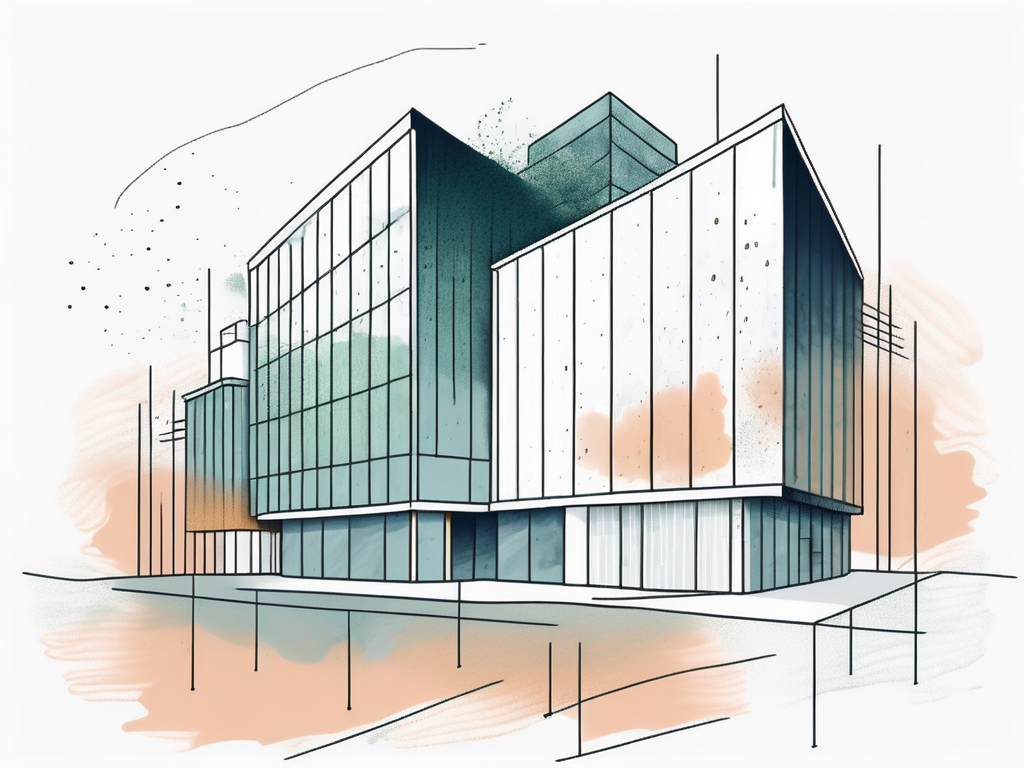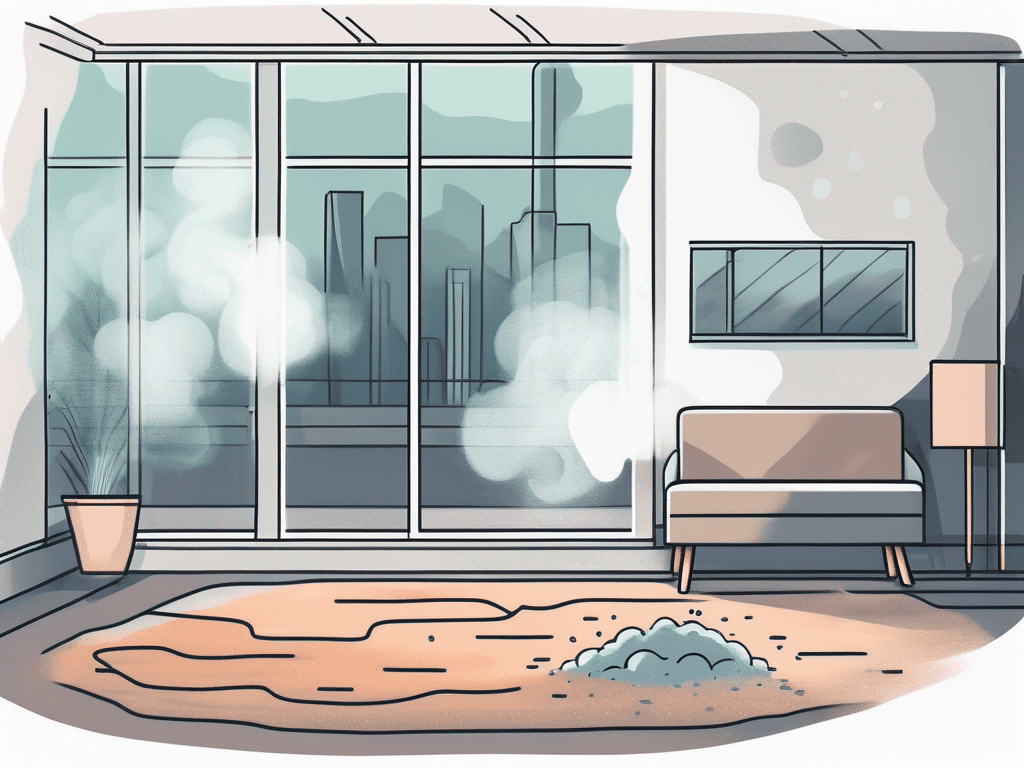Sick Building Syndrome (SBS) is a term used to describe situations in which building occupants experience acute health and comfort effects that appear to be linked to time spent in a building, but no specific illness or cause can be identified. The complaints may be localized in a particular room or zone, or may be widespread throughout the building.
In contrast, the term “building-related illness” (BRI) is used when symptoms of diagnosable illness are identified and can be attributed directly to airborne building contaminants. SBS and BRI are subsets of a larger problem: poor indoor air quality (IAQ), which can lead to discomfort, disease, and reduced productivity.
Understanding Sick Building Syndrome
Sick Building Syndrome is a condition that is believed to be caused by exposure to certain environmental factors within a building. It is characterized by a range of nonspecific symptoms that are temporarily associated with occupancy of a particular building, typically an office, and that improve or resolve when individuals are not in the building.

These symptoms often include headaches, dizziness, fatigue, irritation of the eyes, nose, or throat, dry cough, dry or itchy skin, difficulty in concentrating, sensitivity to odors, nausea, and irritability. The exact cause of SBS is unknown, but many experts believe that it may be related to poor indoor air quality.
Causes of Sick Building Syndrome
There are many factors that may contribute to the development of Sick Building Syndrome. These include inadequate ventilation, chemical contaminants from indoor sources, chemical contaminants from outdoor sources, and biological contaminants. Each of these factors can contribute to poor indoor air quality, which in turn can lead to the development of SBS.
Inadequate ventilation can occur if heating, ventilating, and air conditioning (HVAC) systems do not effectively distribute air to people in the building. Chemical contaminants from indoor sources can include products used in the building such as adhesives, carpeting, upholstery, manufactured wood products, copy machines, pesticides, and cleaning agents. These can release volatile organic compounds (VOCs) into the air.
Effects of Sick Building Syndrome
The effects of Sick Building Syndrome can be wide-ranging and can impact both the physical health and the productivity of individuals within the building. Physical symptoms can include irritation of the eyes, nose, and throat, headaches, dizziness, and fatigue. These symptoms can be disruptive and uncomfortable, leading to decreased productivity and satisfaction in the workplace.
Moreover, the psychological impact of SBS should not be underestimated. The uncertainty and stress of dealing with unexplained symptoms can lead to anxiety and stress. This can further exacerbate physical symptoms and lead to decreased morale and productivity.
Indoor Air Quality and Its Importance
Indoor air quality (IAQ) refers to the air quality within and around buildings and structures, especially as it relates to the health and comfort of building occupants. Understanding and controlling common pollutants indoors can help reduce your risk of indoor health concerns.

Health effects from indoor air pollutants may be experienced soon after exposure or, possibly, years later. Immediate effects may show up after a single exposure or repeated exposures. These include irritation of the eyes, nose, and throat, headaches, dizziness, and fatigue.
Common Indoor Air Pollutants
There are many sources of indoor air pollution in any home. These include combustion sources such as oil, gas, kerosene, coal, wood, and tobacco products; building materials and furnishings as diverse as deteriorated, asbestos-containing insulation, wet or damp carpet, and cabinetry or furniture made of certain pressed wood products; products for household cleaning and maintenance, personal care, or hobbies; central heating and cooling systems and humidification devices; and outdoor sources such as radon, pesticides, and outdoor air pollution.
The relative importance of any single source depends on how much of a given pollutant it emits and how hazardous those emissions are. In some cases, factors such as how old the source is and whether it is properly maintained are significant. For example, an improperly adjusted gas stove can emit significantly more carbon monoxide than one that is properly adjusted.
Improving Indoor Air Quality
There are many ways to improve indoor air quality in a building. These include increasing ventilation, using air purifiers, maintaining HVAC systems, controlling humidity, and using low-emitting materials and products. Each of these strategies can help to reduce the concentration of indoor air pollutants and improve the overall air quality within the building.
Increasing ventilation can help to reduce the concentration of indoor air pollutants. This can be achieved by opening windows, using fans, or by using a ventilation system that brings in fresh outdoor air. Air purifiers can also help to remove pollutants from the air. These devices work by drawing air in and passing it through a filter that captures pollutants.
Preventing Sick Building Syndrome
Preventing Sick Building Syndrome involves addressing the underlying causes of poor indoor air quality. This includes ensuring adequate ventilation, controlling sources of pollution, and maintaining a healthy level of humidity. Regular maintenance of HVAC systems is also crucial, as these systems can become a source of pollutants if not properly maintained.

It’s also important to use and store chemicals safely. Many common office and cleaning products can release pollutants into the air. Using these products in a well-ventilated area, and storing them safely when not in use, can help to reduce the risk of exposure. Additionally, choosing products that are low in volatile organic compounds (VOCs) can also help to improve indoor air quality.
Role of Building Design in Preventing SBS
The design of a building can play a significant role in preventing Sick Building Syndrome. For example, buildings should be designed to promote adequate ventilation and air flow. This includes the use of windows that can be opened, as well as the strategic placement of vents and air ducts.
Building materials can also impact indoor air quality. Materials that release low levels of VOCs are preferable, as are materials that are resistant to moisture and mold. The use of such materials can help to prevent the development of Sick Building Syndrome.
Role of Building Maintenance in Preventing SBS
Regular maintenance of a building’s HVAC system is crucial in preventing Sick Building Syndrome. This includes regular cleaning and replacement of filters, as well as regular inspections to ensure that the system is functioning properly. If problems are detected, they should be addressed promptly to prevent the spread of pollutants.
Regular cleaning of the building itself is also important. This includes regular vacuuming and dusting to remove dust and other particles that can contribute to poor indoor air quality. In addition, any spills or leaks should be cleaned up promptly to prevent the growth of mold.
Conclusion
Sick Building Syndrome is a complex issue that can have significant impacts on the health and productivity of building occupants. Understanding the causes of SBS and taking steps to improve indoor air quality can help to prevent this syndrome.
While it may not be possible to eliminate all sources of indoor air pollution, understanding the sources in your specific environment and taking steps to reduce exposure to these pollutants can significantly improve indoor air quality and reduce the risk of SBS. It’s important to remember that improving indoor air quality is a process that requires ongoing effort and attention.






